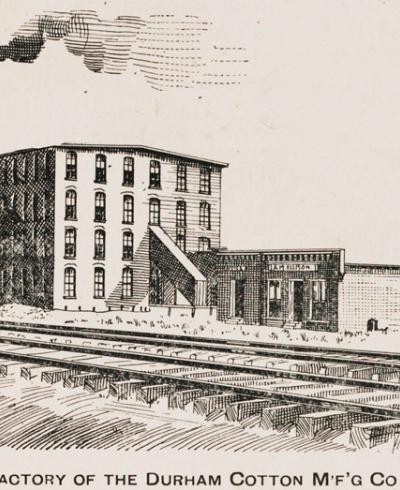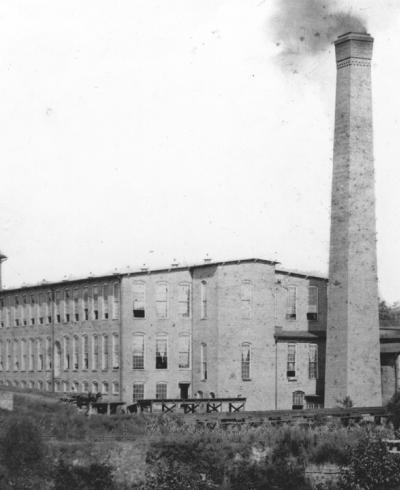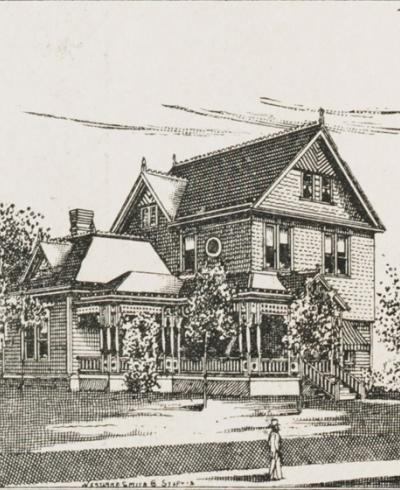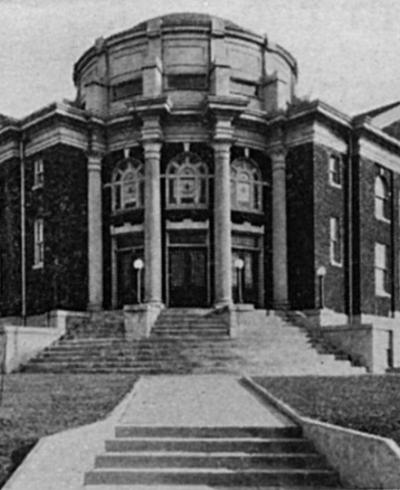 (Below excerpted from Trinity College Historical Society. Historical Papers of the Trinity College Historical Society. Durham, N. C.: The Society. 1897-1956.)
(Below excerpted from Trinity College Historical Society. Historical Papers of the Trinity College Historical Society. Durham, N. C.: The Society. 1897-1956.)
"William Henry Branson's father was named Thomas, doubtless for the original Branson, and was born in Randolph County, near Asheboro, in the year 1800. For four generations the Branson family remained in this section of the State, a fact which indicates an indisposition to rove from point to point in search of easier fortunes.
Thomas Branson, the father of William H. Branson, was twice married; the first time to Miss Mary Lewellyn, the second time to Mrs. Prescott, who was a Miss Buck. William was the only child by this second wife. He was born near Cedar Falls, Randolph County, May 23, 1860. His father was a blacksmith, a vocation of large importance in the first half of the nineteenth century.
Thomas Branson died when William was very young. This, joined with the extremely poor educational facilities, gave young William no opportunity to attend any other than a local school. His half sister, Miss Jennie Prescott, married Mr. J. A. Odell, a merchant in the town of Greensboro, N. C. At the age of twelve he went to live with them as a member of the family. This was a new era in William’s life. He worked in the store as a clerk, and developed his powers to deal with large and varied classes of men. A young boy behind the counter of a busy store is not in the poorest school. To succeed as a clerk requires energetic study and large self-control. William succeeded.
William was sixteen years old when the Centennial Exhibition came on in Philadelphia. Mr. Odell, as an expression of appreciation of him and his work, took him to Philadelphia. This opportunity to look out on the world and feel the throb of its energy and genius, meant much to this lad of sixteen years. The country school in Randolph county, the Odell home and store, and the trip to Philadelphia, and at the same time a short visit to New York, were the schools in which William H. Branson was educated. In the first, he gained access to books; in the second, access to business and society; in the third, access to the impulses of the world.
When William returned to Greensboro from Philadelphia he had his wardrobe and fifteen cents in cash. From this time he became an employee of Mr. Odell on a salary of fifteen dollars a month. Thus he entered on his business career.
When Mr. Branson was seventeen years old he was converted at a meeting held in West Market Methodist church, in Greensboro, N. C. At the same time he joined the Methodist church. His parents were Methodists, and his associations after he left the home of his mother, preserved in him the faith of the household.
At the organization of the Durham Cotton Mill, in 1884, Mr. J. A. Odell was elected President, and William H. Branson was chosen Secretary and Treasurer. Young Branson was practically placed at the head of this new enterprise, for through him Mr. Odell directed the business. At this time the cotton manufacturing interest entered on the period of expansion in the South Atlantic States. The growth was rapid, but the fact that untrained men were necessarily placed at the head of new mills, made it a critical period. Not only were new markets to be opened and new business affiliations formed, but unexperienced labor was to be trained, and new social relations were to be adjusted. It was into the midst of these problems that Mr. Branson was suddenly thrown. He met them with an assuring faith.
During the business panic of the first years of this decade [1890s], he showed no timidity, but maintained that stability which alone can secure the integrity of business. He was a Trustee of Trinity College, a Member of the Executive Committee of Trinity College, Trustee of Greensboro Female College, Director of the Fidelity Bank, Secretary and Treasurer of Durham Cotton Mill and Pearl Cotton Mill, Director of the Durham and Oxford Railroad, Director of Odell Manufacturing Company, Treasurer of the Joint Board of Finance of the North Carolina Conference, Steward of Carr Church, a Trustee of Church property, and associated in some way with various other institutions. These were not honorary positions, but enterprises which sought the wise direction of this strong man. So they were to him responsibilities, and got from his closest study and faithful direction.
December 17, 1885, he was married to Miss Clara Sargent, of Greensboro, N. C. The city of Durham will not forget the evening rides he took with his family.
As treasurer of the Joint Board of Finance the entire financial work of the year in the North Carolina Conference passed under his review. He was always present at the sessions of the Conference, never allowing business to keep him away, or to call him home before his work was finished. Twice he was a member of the General Conference; the first time at the session of 1894, in Memphis, Tennessee, and as an alternate in the last session, which met in Baltimore, Maryland, May 1898.
Tall and erect, weighing nearly two hundred pounds, with a large head, broad brow, bright and expressive eye, strong features, and noble movement, he was the embodiment of high honor and noble impulses. He was just reaching up to that period of life when everything is full of glad prophecies. In the glow of these hopes, death came to him while he was in the path of duty, the only path in which he ever made a footprint. A darker shadow never fell on any community than the one that came to the city of Durham when, on the seventh day of April 1899, William H. Branson, by a fearful accident, was taken away."

 (Below excerpted from
(Below excerpted from 



Add new comment
Log in or register to post comments.